
Claudia Savage (PA)
Frederick Douglass is “amongst the people he loved”, as a statue of the anti-slavery campaigner has been unveiled in Belfast.
Douglass was born into slavery, but managed to escape in 1838 and went on to become a national leader of the abolitionist movement in America, known for his eloquent speeches and writings.
He first visited Belfast in 1845 at the invitation of the Belfast Anti-Slavery Society and returned for a second visit in 1846.
A statue of the former slave, turned writer and statesman, is now on display in Lombard Street in the city centre.
Professor Christine Kinealy, the director of Ireland’s Great Hunger Institute at Quinnipiac University in Connecticut, is the author of Frederick Douglass and Ireland: In His Own Words.
At the unveiling of the statue Dr Kinealy told the PA news agency of Douglass’ significance to Belfast.
“Frederick Douglass is increasingly a symbol of international social justice,” she said.
“This is something that’s very dear to many people within Belfast, so I hope this place becomes a rallying point for people who want to effect real change and to have a more inclusive, equitable future for all people of Ireland.”
Douglass gave around 50 speeches in his time in Ireland and could speak for up to two hours without notes.
Dr Kinealy said the statue was a homecoming for Douglass, who often expressed his love for the city.
“He was just so incredibly articulate, and so thoughtful in his commentary, and even more incredible when you think it was illegal to teach people who are enslaved to read or write, so he was totally self taught,” she said.
“I think the most beautiful is that when he was leaving Belfast, he said: ‘Wherever else I feel myself to be a stranger, I will always know I have a home in Belfast.’
“And to me that’s what today represents, Frederick Douglass finally coming home to Belfast to be amongst the people he loved.”
Some 12 students from the US attended the unveiling as part of their work with the Frederick Douglass Global Fellowship, a programme that studies social justice leadership in America, South Africa, and Ireland.
Fellowship student Akil Cole, from Georgetown University, said he was “inspired” to see the statue of Douglass in Belfast.
“We’re able to remember them for their work… but I think more importantly, there are people that actually still care about his work, about social justice, about equity, about access to rights, not just in a historical sense, but in a very present sense,” he said.
“So it’s nice to be here for this. It’s also important to remember that this moment is just a moment and after this we have to get back to work.
“So I’m excited to celebrate this but I’m also excited to get back to work and back to business.”
Zoriana Martinez, fellowship student from Wayne State University, said the statue was a sign of “international camaraderie”.
“I think it really just reminds us that we’re not all so different apart from each other,” she said.
“I think that Frederick Douglass kind of spoke about when he was out here, how he felt like he really was treated like a human for the first time, and really just seeing that kind of sense of international camaraderie and international collective.
“At the end of the day we all kind of want the same things. We all want to be taken seriously, we want to be treated like decent human beings, we all want to have access to equal opportunity, and that’s something that is still true today centuries later.”
The life-size statue was created by renowned Scottish figurative sculptors Alan Beattie Herriot and Hector Guest.
The first statue of Douglass in Europe, it is located beside the historic First Presbyterian Church in Rosemary Street where he delivered lectures during his time in Belfast.
Belfast Lord Mayor Councillor Ryan Murphy said: “I think it’s absolutely fantastic, it’s important that we tell the history of Belfast.”
He added: “Frederick himself was the leader of the abolitionist movement, he was a former slave and he had to come to Britain and Ireland in fear of being captured again back in America, and during that time he noted the welcome that he received in these parts.
“He was brilliant in terms of his ideas and his beliefs, and I think it’s important this is here and we can actually tell that story, and talk about his ideas and beliefs, and they’re still as relevant today as they were in the 19th century.
“We should also make sure that today, 2023, that we’re as welcoming to those newcomers to the city as the same welcome that Frederick got when he arrived here back in 1845.”
Tukura Makoni, policy officer from the African Caribbean Support Organisation Northern Ireland, said the statue would represent “many things to many people” but added that the African/Caribbean community were not engaged with the process of the statue being built.
“The way we can improve things for all communities here in Belfast is by including them in processes that dictate the things that are influential or significant in our lives, the basic things,” he said.
“Even when looking at the erection of this statue, the African and Caribbean community was not consulted, was not engaged about how we feel about the statue.”
He added: “We weren’t consulted about where it was going or that it was even going up.
“So how we can make things better is by including everybody in all the processes that govern our lives, whether it be leisure, education, politics, the workplace, there needs to be earnest inclusion and engagement to improve things.”
Belfast has been confirmed as the host city for Douglass Week 2024 which commemorates the life of the anti-slavery campaigner.
The week will feature events staged in person and online in Belfast and across Northern Ireland, as well as the Republic of Ireland and the USA.

The newly unveiled statue of anti-slavery campaigner Frederick Douglass in Belfast (photo by PA)


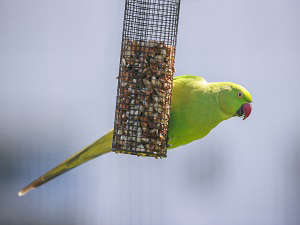 Guidance sought over future of colourful parakeets in Belfast park
Guidance sought over future of colourful parakeets in Belfast park
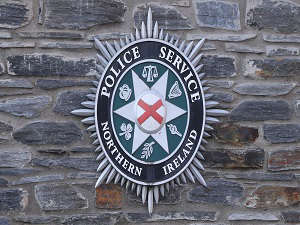 Woman released after questioning over pipe bombs in Co Down
Woman released after questioning over pipe bombs in Co Down
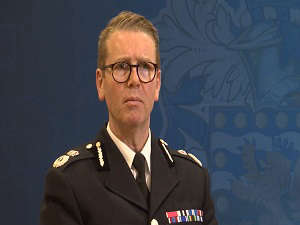 Suspended chief constable will not be prosecuted over alleged sexual offences
Suspended chief constable will not be prosecuted over alleged sexual offences
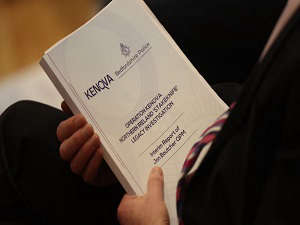 MI5 files not deliberately withheld from Stakeknife probe, review concludes
MI5 files not deliberately withheld from Stakeknife probe, review concludes
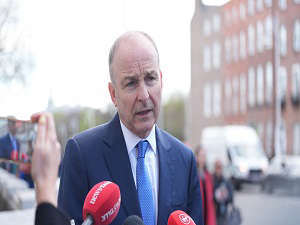 Taoiseach urges gardai and others to testify at Omagh bomb inquiry if asked
Taoiseach urges gardai and others to testify at Omagh bomb inquiry if asked